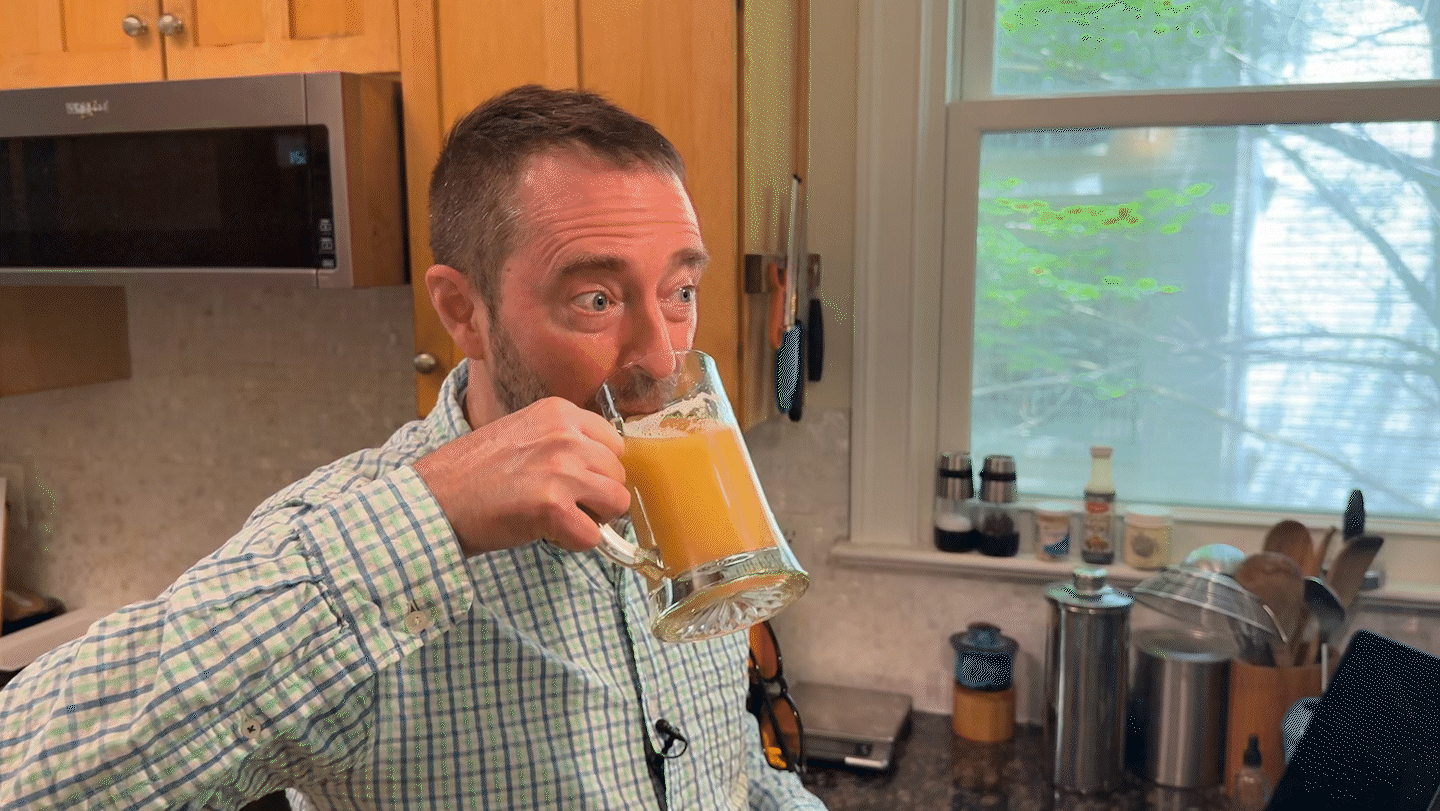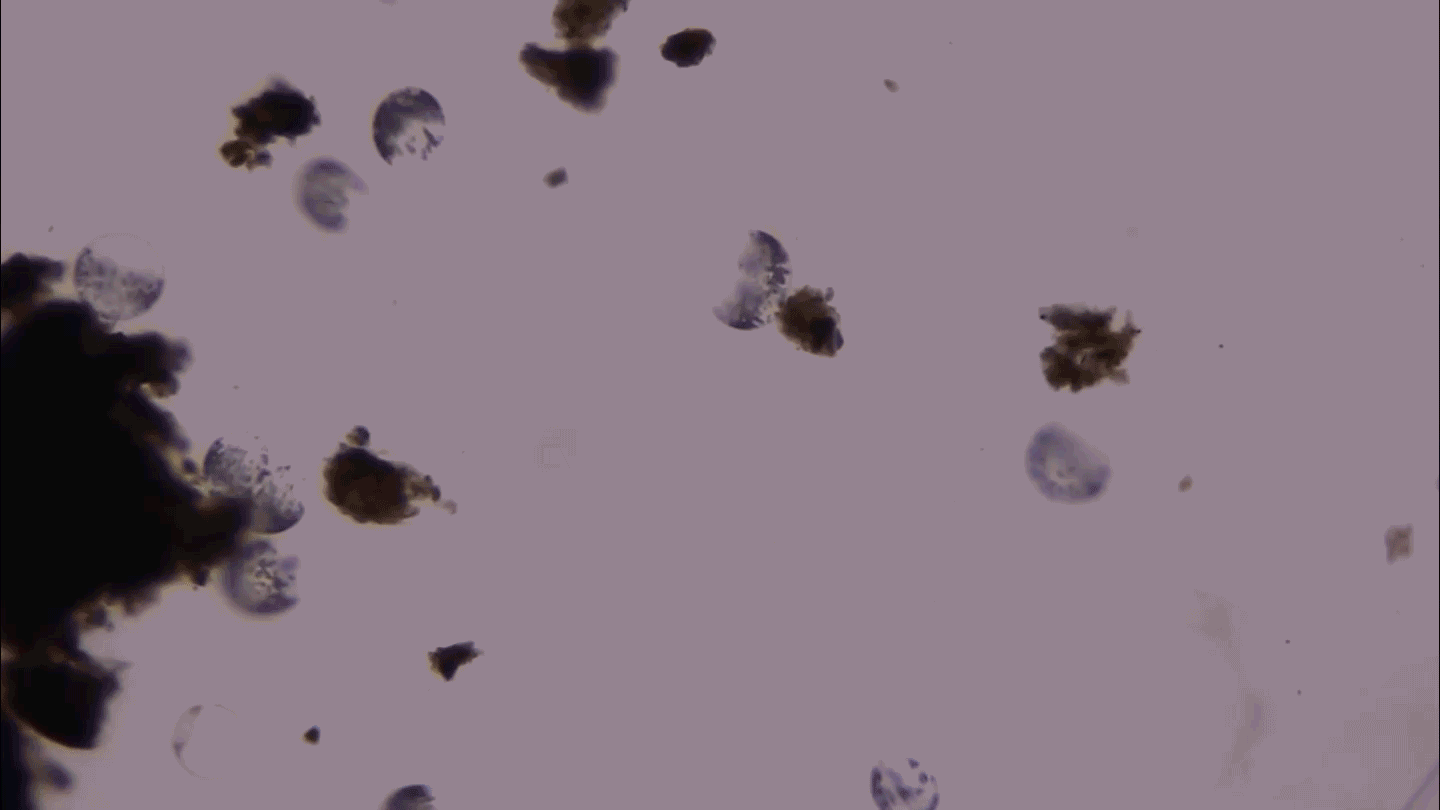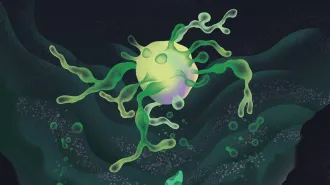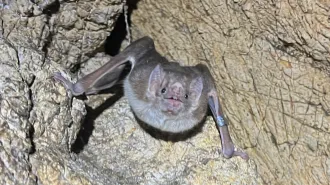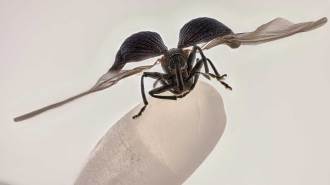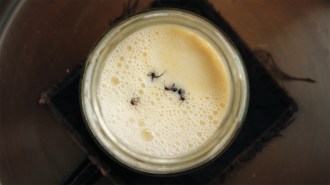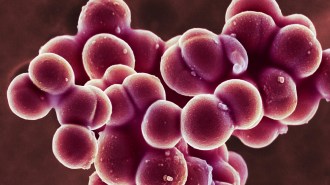What makes chocolate taste so good? It’s the microbes
Wild microbes shape chocolate’s flavor during cocoa fermentation
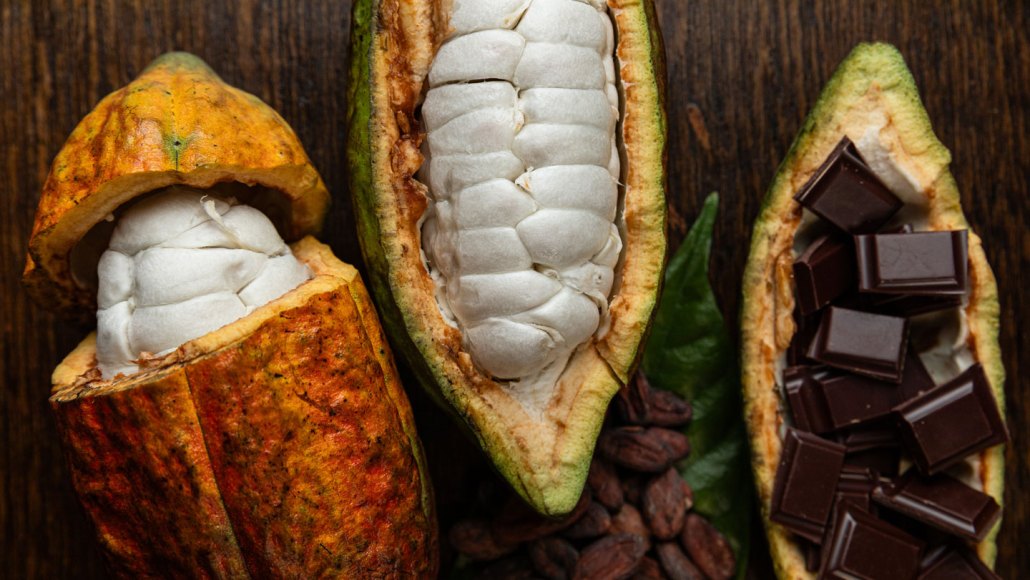
Chocolate’s flavor comes not just from the plant, but from yeast and bacterial fermentation that converts sugars and other molecules in the beans and pulp (white surrounding beans inside the pod, middle and left) into fine flavors.
Mimi Chu Leung
Like wine and cheese, chocolate has terroir, a sense of the place it was grown.
Each bonbon or bar may carry unique flavors shaped by the soil, rainfall and temperature of the farm. But much of that flavor variation comes from wild microbes that spontaneously ferment cocoa beans after harvest, says David Gopaulchan, a plant geneticist at the University of Nottingham in England. Cocoa plants’ genetic makeup plays a role in chocolate’s taste, but “fermentation also is driving the flavor development, and I would even argue, has an even bigger impact on the flavor profile,” he says.
Gopaulchan and colleagues cataloged microbes and tracked the fermentation processes that give fine chocolates on two Colombian farms the floral, fruity and other subtle notes that set them apart from the more monotone cocoa flavor of bulk chocolate. In the lab, the team assembled a limited community of yeast and bacteria that can recreate some fine chocolate flavors, the researchers report August 18 in Nature Microbiology.
These starter cultures could help cocoa farmers more reliably ferment tasty chocolate and raise the quality of their product, Gopaulchan says.
Other researchers have previously identified microbes involved in cocoa fermentation, but this work “pulled out all the stops to try to understand the process,” says Rachel Dutton, a microbiologist and founder of Microcosm Foods, a company based in Berkeley, Calif., that explores connections between fermented foods and health.
Gopaulchan and colleagues selected three women-owned farms in Colombia that grow similar strains of cocoa. Two of the farms produced fine chocolate while the third made bulk chocolate. The researchers measured temperature and pH changes in the fermenting beans and took molecular snapshots of microbes present at each stage of the process.
Yeasts are some of the first organisms to belly up to the chocolate bar, the researchers found. Those include Saccharomyces cerevisiae, the same fungi used for baking, brewing beers and fermenting wine. Yeast break down sugars in the cocoa beans, converting them to alcohol. That process generates heat, shooting temperatures up within 24 hours of starting fermentation, the researchers found.
It’s important that the fermentation temperature reach 44° Celsius to kill the beans and keep them from germinating, says Naailah Ali, a food technologist and expert chocolate taster at the Cocoa Research Centre at the University of the West Indies’ St. Augustine campus in Trinidad and Tobago.
After 48 hours, acetic acid– and lactic acid–producing bacteria began to increase in abundance, converting the alcohol into acids that increase the pH and further break down the beans and pulp. Other yeasts and bacteria join the party, feasting on compounds made by their predecessors and converting them to flavorful molecules.

The timing and speed at which temperatures and pH fluctuate and the dynamics of the transitions between microbes influence important flavor differences, says Aimee Dudley, a yeast geneticist at the Pacific Northwest Research Institute in Seattle who was not involved with the work.
Gopaulchan and colleagues analyzed the fermenting microbes’ genes to find those related to production of certain flavor compounds and predicted a collection of microbes that should reproduce the two farms’ fine chocolate flavors. The researchers put together combinations of bacteria and yeasts and fermented small batches of beans in the lab. Ali and a panel of other expert tasters confirmed that the lab-fermented beans had notes of orange blossom, citrus, berry, tropical fruit and flowers characteristic of fine chocolates from the two Colombian farms and a sample from Madagascar. The lab mix was missing caramel, nut and light wood flavors, and had more grassy notes than the fine chocolates did.
The study demonstrates that cocoa-fermenting microbes form reproducible communities in predictable ways, says Dutton, a resident at the Astera Institute, who was not involved with the work. She has found similarly reproducible fungi and bacterial communities in cheese. And like in cheese, different strains of local microbes bring their own flavor flourishes to cocoa fermentation.
In the future the researchers may also create microbe mixes that produce designer flavors or even engineer flavors that don’t exist or are hard to find in natural fermentation, Gopaulchan says.
But some chocolate makers aren’t on board with that idea. Such designer microbe cocktails “would be very much rejected by the craft chocolate producers and market,” say chocolate makers Luisa Bedi and Martyn O’Dare of Luisa’s Vegan Chocolates in Nottingham, England. Starter cultures could homogenize chocolate’s flavor and encourage poor farming practices, they say. And there’s no need for those mixes when “good farming practices already produce great tasting chocolate.”
Artificially constructed microbe communities might make too much of the aromatic compounds that flavor the fine chocolates, Dudley says. “Humans have a very sharp boundary for what tastes really good and what tastes awful. And the yeast make the amount of those compounds at exactly that boundary of what humans think is palatable.” Messing with the mixes could cross the line.
And, Dutton says, there is no guarantee that standardized microbe mixes could stand up to native yeasts and bacteria that have adapted to specific conditions on individual farms.
